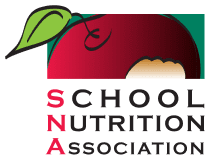An Exploratory Case Study Of A Food Education Program In The United Kingdom: Chefs Adopt A School
Eating behaviors of children and associated health risks have been the subject of research focused on interventions to improve dietary…
Attitudes, Perceived Benefits And Barriers, And Prevalence Of Scheduling Recess Before Lunch
Elementary students spend, on average, seven hours per day, five days per week, and 180 days per year, at school…
Confidence Of Hourly School Nutrition Employees With Local And Farm-Fresh Produce
According to estimates by the Centers for Disease Control and Prevention (CDC), approximately 17% of children and adolescents in the…
Editor’s Notes
For many, May is the month that marks the beginning of the end. By that, I mean the countdown to…
Evaluation Of A Sensory-Based Food Education Program On Fruit And Vegetable Consumption Among Kindergarten Children
Similar to recommendations for adults, children should consume at least five servings (about 400g) of fruit and vegetables per day…
Exploration of Mealtime Practices and Policies Among NC Head Start Organizations: Does Practice Reflect Policy?
Families are primarily responsible for helping children establish positive health behaviors; however, many preschool-aged children (3-5 years) also spend a…
FNS Research Corner Summary of Research
School Nutrition and Meal Cost Study (SNMCS) The School Nutrition and Meal Cost Study (SNMCS) explored both the nutrition and…
Food Traceability In School Foodservice Operations: Benefits And Challenges
Food traceability can be defined as the ability to access all information related to a food product through its entire…
Free Lunch After All? An Historical Review of Implementation of School Meals in New York City Public Schools
ANNOUNCEMENT OF FREE LUNCHES The chancellor of New York City public schools chose a basement cafeteria in Hell’s Kitchen to…
Salad Bars In Schools And Fruit And Vegetable Selection And Consumption: A Review Of Recent Research
Adequate nutrition is essential for child growth and development. According to the 2015–2020 Dietary Guidelines for Americans, a healthy eating…
